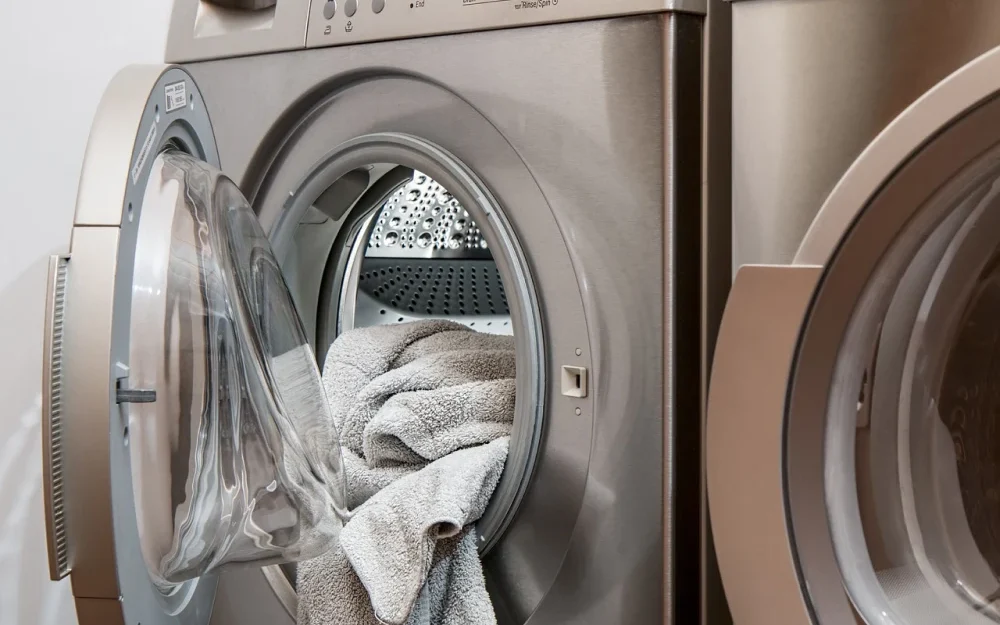Drought-Tolerant Plants for Texas Gardens
4 minute readGardening in Texas presents unique challenges. Long, hot summers and frequent droughts mean that traditional landscaping often requires significant water
Home > BKV Energy Blog > All Posts > How Much Electricity Does a Washing Machine Use?
4 minute read • Last update January 2025

It’s hard to imagine modern life without a washing machine. Have you ever stopped to wonder how much electricity they use?
Whether you’re trying to lower your electricity bills or simply curious about your household’s energy consumption, this quick guide will tell you everything you need to know, including:
We’ll also outline the additional factors that can affect overall efficiency outside of washer wattage and provide some practical tips for cutting your electricity costs.
Some do and some don’t. So, unfortunately, there’s no black-and-white answer to the question, “How much power does a washing machine use?” because power consumption will vary based on machine type, model, power rating, and what settings you use.
That said, the average washing machine uses between 400 and 1,400 watts per hour. While this may seem a lot, most washing machines are more energy efficient than many other household appliances. For context, here’s how the average washer wattage stacks up compared to other commonly used items:
As with all these home appliances, your clothes washer wattage relates directly to your energy costs. But, before you can estimate how much washing clothes costs in dollar terms, we must learn more about watts, kilowatt hours, and how to calculate your electricity usage.
Like all other electrical appliances, the actual power consumption of your washing machine is measured in kilowatt-hours (kWh). But how much energy does a washing machine use per cycle? How many watts does a washing machine use in a week, month, or year? First, you need to calculate the total kilowatt-hours. Here’s how to do it:
Again, there’s no straightforward answer because that all depends on how often you need to run a wash cycle. But how much energy does a washing machine use in an average home? Let’s run some numbers to find out.
The table below shows how kWh consumption varies by wattage range and usage frequency, helping you estimate your washing machine’s monthly kWh usage.
| Machine Wattage | Cycle Length per single load | Loads per Month | kWh per Month |
| 400 | 60 mins | 5 | 2 |
| 10 | 4 | ||
| 15 | 6 | ||
| 20 | 8 | ||
| 600 | 60 mins | 5 | 3 |
| 10 | 6 | ||
| 15 | 9 | ||
| 20 | 12 | ||
| 800 | 60 mins | 5 | 4 |
| 10 | 8 | ||
| 15 | 12 | ||
| 20 | 16 | ||
| 1000 | 60 mins | 5 | 5 |
| 10 | 10 | ||
| 15 | 15 | ||
| 20 | 20 | ||
| 1200 | 60 mins | 5 | 6 |
| 10 | 12 | ||
| 15 | 18 | ||
| 20 | 24 | ||
| 1400 | 60 mins | 5 | 7 |
| 10 | 14 | ||
| 15 | 21 | ||
| 20 | 28 |
Estimating the direct cost of running your washing machine requires only one basic calculation. All you need to do is multiply the relevant kWh total by the kWh rate shown in the energy usage breakdown section of your electricity bill. The average price per kWh in Texas in April 2024 was 15 cents. So, for example, for a 1000-watt machine running 15 times per month, we can estimate the following:
Monthly use = 15 kWh x 0.15c = $2.25
Annual use = $2.25 x 12 = $27
As you can see, the cost of running frequent loads is relatively low. Other appliances probably use a lot more power, even though they use less energy. For example, the average microwave is only about 1200 watts. However, you’re likely to use it multiple times a day, resulting in a higher kWh cost overall.
The total cost of running your washing machine depends on a combination of factors, not just wattage alone. Here are a few examples:
Considering all these variables will help you better estimate your washing machine’s energy usage and overall efficiency.
Here’s a list of practical ways you can save money on your laundry cycles while still ensuring plenty of clean clothes for your family:
Implementing these tips will help you increase efficiency without sacrificing cleanliness or convenience.
Looking for more ways to improve efficiency and save on energy costs at home? It might be time to switch to a better utility plan.
At BKVE, we believe in fair, gimmick-free electricity prices. Our straightforward plans have already helped many Texans save hundreds of dollars annually.
Take control of your energy costs today—explore our Bluebonnet plan or compare rates to find your family’s perfect option.
Graham Lumley, Digital Marketing Manager at BKV Energy, leads digital and traditional marketing strategies, focusing on educating Texans about the state's deregulated energy market. With over 8 years of marketing experience, he creates content to help consumers understand and save on their energy bills, bringing a fresh and dynamic approach to the industry.

Gardening in Texas presents unique challenges. Long, hot summers and frequent droughts mean that traditional landscaping often requires significant water

How much can you save with a more energy efficient air conditioner?
Get $50 off your electric bill!
Use code BKVEJOINUS50
Enter your zip code to shop BKV Energy's affordable, fixed-rate Texas electricity plans. Use the promo code for $50 off your electric bill.